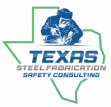Update: These OSHA 300 log electronic reporting requirements that went into effect in 2016 are ongoing.
Before reading below, checkout this quick video from OSHA which summarizes why the rule changes are happening and what you can expect.
In May, OSHA published the final rule revising their 1904 regulations. These regulations cover reporting, recording, and recordkeeping of work-related injuries and illnesses. The biggest change implements an electronic reporting component for all Construction (NAICS starting with 23) and Manufacturing (NAICS starting with 31-22) establishments. The other change is protecting employees when reporting work-related injuries and illnesses. These changes require making it easy for employees to report injury and illnesses, and protecting employees from retaliation or disciplinary action due to reporting an injury or illness. As usual, OSHA did not make this easy to understand. Click here to visit OSHA’s website which provides more detailed information on these changes and how they can impact your organization. Recommended reading for company executives, but highly recommended for individuals who perform your injury/illness recordkeeping and executives responsible for injury reporting and disciplinary procedures,
As always, Berg consultants are ready to help you navigate these changes. We are just a phone call or email away.
For the time being, here are the actions you need to take prior to February 1, 2017. For your convenience, we have attached the applicable forms. If you have establishments in a state with their own OSHA program, such as California, your state may have their own form you will be required to use. If you had more than 10 employees at anytime during the year, you are required to post a 300A. This includes temporary employees that you directly supervised and controlled. If you have multiple facilities, each facility would be considered an Establishment and requires it’s own 300A. Short-term construction projects, or those expected to last less than 12 months, may be combined into a single regional summary, a copy of which is posted at each site located in that “region”. Projects expected to last longer than 12 months will require a separate summary. The main, or corporate, office of a company can still develop and post a corporate summary that incorporates all projects, both short-term and long-term. However, a corporate 300A shall only be posted at the corporate office in order to remain in compliance with 1904.30.
- Ensure your work-related injuries are documented on the OSHA 301 Incident Report form. You can use an equivalent form as long as it, at a minimum, contains the same information as the 301.
- Ensure you injury logs us up to date and current. OSHA recommends using the OSHA 300 Log of Work-related Injury and Illness form. You can use your own form, if it contains the same information as the OSHA 300 and in a similar to read format. The information in this log is derived from the 301 or your injury reporting forms.
- Prepare your OSHA 300A (or equivalent state form) using the information from your OSHA 300 log. The form should be certified by a company executive and posted in areas where employees gather (announcement boards, breakrooms, etc) by February 1. You may remove the form starting May 1.
- DO NOT post your OSHA 300 form, only the 300A. Your 300 will contain employee names, which is considered protected information.
Some quick tips, based on observations Berg Compliance Solutions’ consultants have seen in the past.
- OSHA 300 has multiple injury type blocks checked. Only one block is checked, and it is the worst case. If an injury started as a Restricted/Job Transfer case and then the employee lost time, it would be treated as a lost time, and only that block is checked.
- Days away or Restriction/job transfer numbers have not been updated. The information on the 300 log should be updated whenever you receive a new Dr note to reflect the new changes.
- Information on the 300A doesn’t match the 300. If your 300 is accurate, then transcribing the totals from the 300 to the 300A should be easy. Normally we see inaccurate 300 data then transferred to the 300A. With the new electronic reporting, we will want to ensure accurate date.
- Establishment information missing. Key information we often find missing is the establishment’s SIC or NAICS code not entered. These codes, Standard Industrial Code or the North American Industrial Code System are important, not only to determine if you fall under the electronic recordkeeping requirement but may also impact your environmental compliance. We have seen where companies have mis-identified their SIC or NAICS. Mis-identification can also impact your environmental requirements.
- Hours worked is missing. This would include all hours all your employees, including temps (as referenced above. Do not include sick or vacation, but include work related travel and work from home hours.
- Average number of employees date is missing. Take the number of employees, including temporary employees, you had each month. Add those results from each month together and dive by 12.
- Have a company execute sign and date the form
- Post by February 1 in areas where employees read bulletins or company announcements. This may be in multiple locations throughout your facility.
OSHA compliance issues can be overwhelming, especially for small companies who often lack the internal expertise to understand and manage everything.
If this sounds familiar, don’t fret!
Our mission is to help small companies understand & manage EHS compliance and we’re here to help!
Call 512-457-0374 or Click Here
